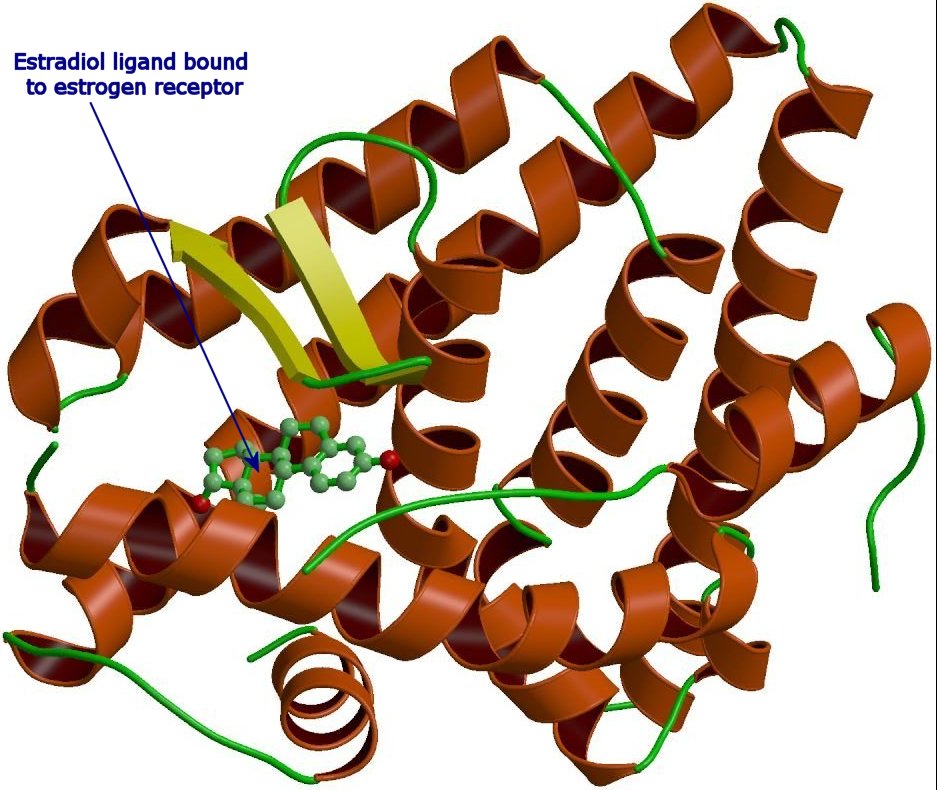
Estrogen receptor (ER) bound with estradiol - In the computer rendered graphics above, the small green molecule is Estradiol, the primary "female" estrogenic hormone, which is part of the Nuclear Receptor Superfamily. The remainder of the image shows the ligand binding domain of the ER protein. The Nuclear Receptor Superfamily protiens include many hormones that have long been known to be highly conserved (i.e., high amino acid sequence homology across vertebrate metazoans) across evolution in vertebrates. Recently, Keay et. al. report (Endocrinology Vol. 147, No. 8 3861-3869) an ER ortholog from an invertebrate, the cephalopod Octopus vulgaris, in which estrogens are produced and play an apparent role. This suggests that the nuclear proteins predate the origin of bilaterally symmetrical animals some .7 to 1.1 billion years ago in the Proterozoic. The estrogen receptor (and its "brother" the androgen receptor) mediates many endocrine system biological processes both before birth, and throughout life in both males and females. For example, in humans, estradiol is required to make the male brain male during early development; remember, all humans are female in the earliest stages of embryonic development. Molecular phylogenetic studies of protein homology (i.e., amino acid sequence similarity comparisons with assumptions of mutation rate) date the ER and other Superfamily members into the Precambrian. Thus, if molecules could be fossils, the ER above would be a living fossil of truly ancient origins. The main function of the estrogen receptor is as a DNA binding transcription factor that regulates gene expression. However the estrogen receptor has other functions independent of DNA binding. Contrary to what old endocrinology tests assert, the ER is a promiscuous receptor that will bind many small molecule ligands, and many of these are environmental chemicals and pollutants. Such chemicals have been called Endocrine Disruptors, and adverse effects of such chemicals have been a major scientific concern over the past decade. Estrogen receptors are overexpressed in around 70% of breast cancer cases, which are clinically referred to as ER positive. Estrogen gives cells permission to grow when appropriate. This is essential during puberty, but also necessary in adult life. For instance, estrogen is important in bone growth, and low levels of estrogens can lead to osteoporosis. But in the case of cancer, estrogen can enhance unnatural growth and make the disease worse. The drug tamoxifen is used to treat cancer by blocking the action of estrogen. Tamoxifen is a small drug that mimics the shape of estrogen and binds tightly to the estrogen receptor. When it binds, it changes the shape of a signaling loop on the surface the receptor, preventing such estrogen induced effects as cell division that could worsen cancer. Also see Fossil Record for more about the evolutionary origins of the estrogen receptor protein. |